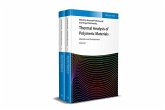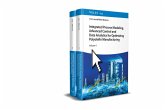
Gebundenes Buch
1. Auflage
3. Januar 2012
Wiley & Sons
| eBook, ePUB | 107,99 € | |
| eBook, PDF | 107,99 € |

Ähnliche Artikel


Gebundenes Buch
Synthesis, Characterization, Processing, and Applications
1. Auflage
1. November 2009
Wiley & Sons

Gebundenes Buch
Simulation, Optimization, and Control
1. Auflage
4. März 2013
Wiley & Sons

Gebundenes Buch
Methods, Machines and Materials, Applications, Automation, Sustainability, and the Circular Economy
2. Aufl.
22. August 2023
Wiley / Wiley & Sons
1W119666050

Gebundenes Buch
Methods and Developments
1. Auflage
Juli 2022
Wiley / Wiley-VCH
1134782 000



Gebundenes Buch
1. Auflage
23. Dezember 2004
Wiley & Sons

Gebundenes Buch
2 volumes
1. Auflage
23. August 2023
Wiley-VCH
1135267 000
Ähnlichkeitssuche: Fact®Finder von OMIKRON
